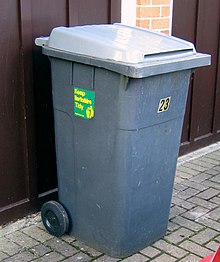AP Environmental Science/Introduction/Developed vs. Developing Countries
| Developed countries | Developing countries |
|---|---|
| US, Canada, Japan, Australia, NZ, Europe (generally) | Most are in Africa, Asia and Latin America |
| Pop.: 1.4 billion, 18% of the WP | Pop.: 6 billion, 82% of the WP |
| 85% of the world's wealth | 15% of the world's wealth |
| 88% of natural resource use | 12% of natural resource use |
| Generate 75% of pollution/waste | Generate 25% of pollution/waste |
| Growth rate: .1% (rule of 70: 700 years) | Growth rate: 1.5% (rule of 70: 47 years) |
Population Growth (World)
[edit | edit source]| Years | Pop. Growth | Years (Count) |
|---|---|---|
| 0-1927 | 2 billion | 18 centuries |
| 1928-1974 | 2 billion | 25 years |
| 1975-1999 | 2 billion | 25 years |
| 2000-2013 | 2 billion | 13 years |
What's the Differences?
[edit | edit source]

To judge whether a country is developed or developing, we have to take a look at its economic development. Countries like the US and Japan are considered developed countries due to their high levels of industrialization and (avg) per capita income (38,000 dollars) while developing countries like Sri Lanka, Togo, and Uzbekistan are less industrialized and have a lower (avg) per capita income (4,000 dollars).
You also have to look at the GDP per capita, which is the number of people living in the country divided by the country's GDP (Gross Domestic Product). The GDP is the total annual value of goods and services made by the whole population, including its people and companies, both domestic and international, within its border. The GDP shows how big the economy of the country is. If the growth rate shows a bigger growth rate than the quarter before, this means the economy is growing and is doing well for the country. If the growth rate is slower than the quarter before, then it causes a recession, a huge decline in economic activity. If the recession lasts for a while, it eventually turns into a depression (The Great Depression). Although we don't want the economic activity to decline, we also don't want it to ridiculously increase, causing inflation (fall of the general purchasing power of money). People use the GDP's of countries to compare--to see which economy is thriving more.
A 100 year gap exists between developed and developing countries in terms of education. Many students in developing countries don't get their necessary education due to various issues, such as political issues or war (see https://edlab.tc.columbia.edu/blog/12261-Developed-Countries-VS-Developing-Countries).
In developed countries, the population is usually more stable (steady/moderate growth rate of .1%) and less infant mortality rates (number of infant deaths per 1,000 births) and total fertility rates (number of births expected by a woman through her childbearing years) than developing countries (growth rate of 1.5%), who see a higher rate of infant mortality rates and total fertility rates. Poor medical care, widespread diseases, cultural practices are to blame for these high rates.
Wealth is unequally distributed in developing, while developed countries have equal utilization of wealth. Developed countries have 85% of the world's wealth while developing countries have 15% of the world's wealth.
In Africa, high oil prices and the absence of money made by foreign trade has led to energy poverty. Developed countries use 88% of the world's natural resource while developing countries only use 12% of the world's natural resource.

With poor work in the medical field and a lack of awareness on the topic of properly handling waste, the effect of pollution (environmental pollution, for example) has definitely taken a toll in several developing countries. In Botswana, the 11,000 kg of waste created per day caused a serious danger to community health (disease-carrying insects) and the environment (destruction of ecosystems). Seemingly small things in developed countries, such as the formation of trash cans and the law against littering, has allowed the levels of pollution to be well-managed and the waste to be under control. Practices such as source reduction (designing products to limit waste), recycling (using useful items, such as paper, to make them into new items) and composting (collecting organic waste and restricting it under conditions that allow it to break down naturally), all regular practices in the USA, have prevented risks to community health from arising.
